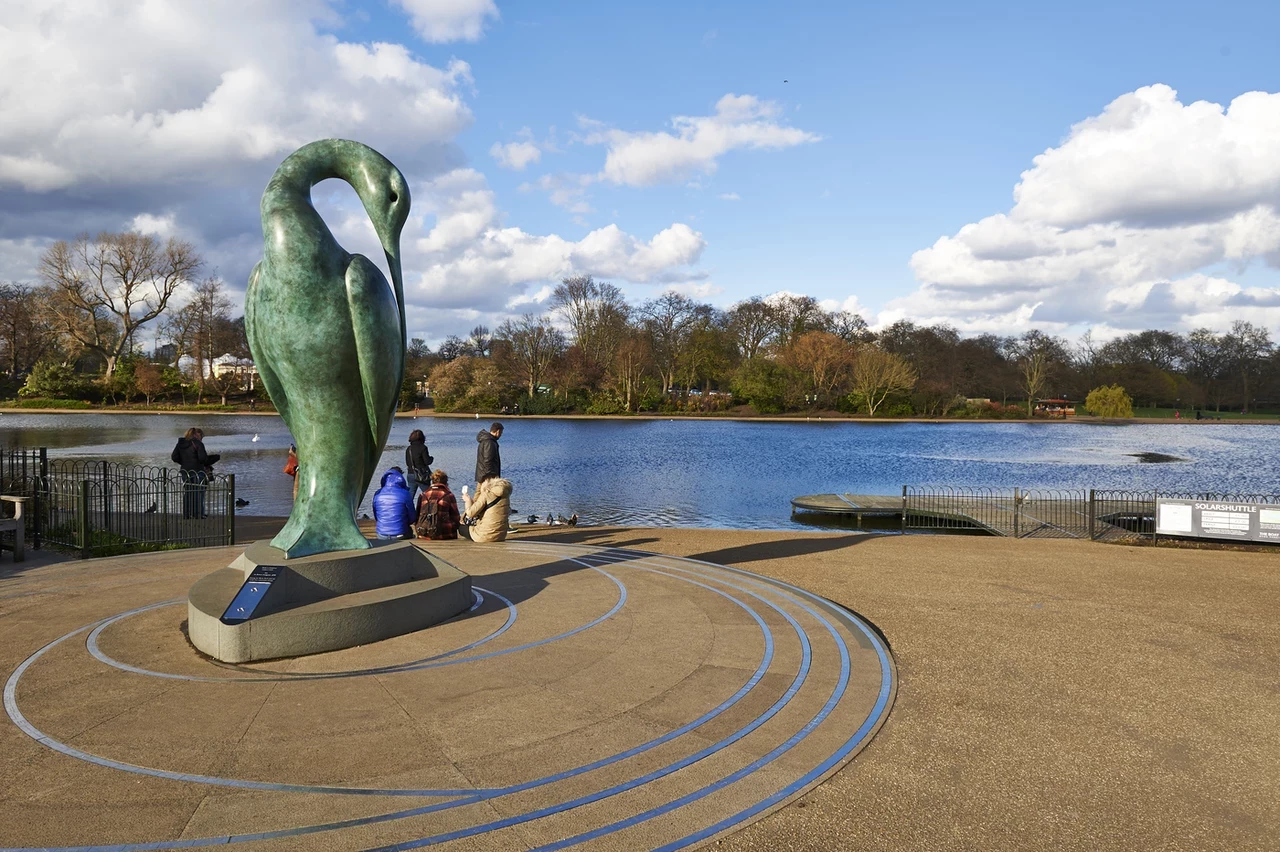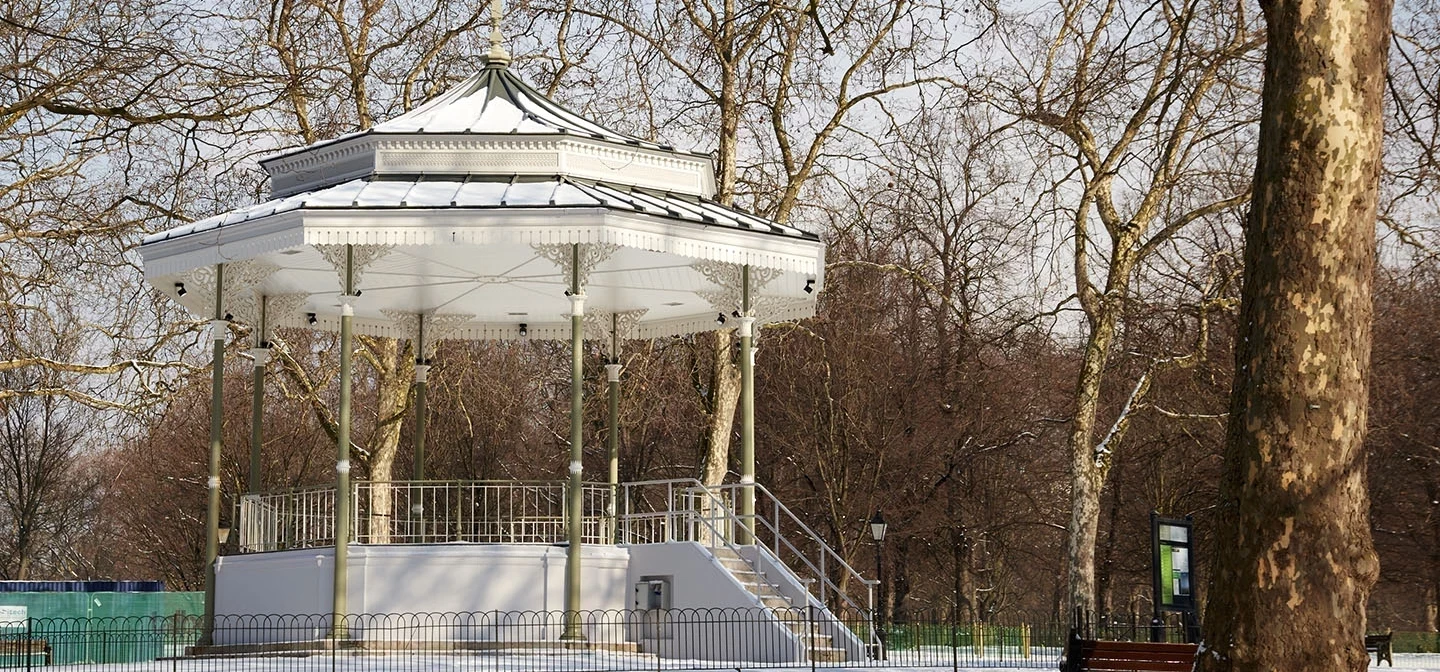
Monuments in Hyde Park
Key information
Opening times (pedestrian gate)
Pedestrian gates 5am - midnight
Food & drink available
Shop open 10am - 6pm, 7 days a week
There’s no shortage of monuments and statues to explore in Hyde Park.
Many important events and individuals are commemorated at the park. To the east of The Serpentine you’ll find Britain’s first memorial to the victims of the Holocaust. Surrounded by pretty birch trees, it provides a quiet place of contemplation for visitors.
One of the best-known features of the park is the Diana Memorial Fountain, opened in 2004 as a tribute to Diana, Princess of Wales. It’s a popular place for children to play and paddle.
The rich political history of the so-called ‘People’s Park’ is commemorated at the Reformers’ Tree, where a mosaic on the ground reminds visitors of the Victorians who came to the park demanding a vote for all adult men.
At Hyde Park Corner, it is impossible to miss Apsley Gate. This grand classical gateway was designed by famous architect Decimus Burton and erected in the 1820s.
| Monuments index | |
|---|---|
7 July Memorial
A permanent memorial to honour the victims of the 7 July 2005 London Bombings.
The 7 July Memorial was unveiled in Hyde Park by Their Majesties The King and Queen (The then Prince of Wales and The then Duchess of Cornwall), in a ceremony attended by senior political figures and the families of the 52 killed, on the fourth anniversary of the disaster, Tuesday 7 July 2009.
The memorial comprises 52 stainless steel pillars (stelae), collectively representing each of the 52 victims, grouped together in four inter-linking clusters reflecting the four locations of the incidents. Constructed from solid-cast, long-lasting stainless steel, each stela measures 3.5 metres high and is unique, with individual characteristic finishes brought about by the casting process. A stainless steel plaque listing the names of the victims is sited on a grass bank at the far eastern end of the memorial.
The memorial was produced by a design team including architects Carmody Groarke and engineering team Arup, who worked in close consultation with representatives of the bereaved families and advisors from The Royal Parks and DCMS, and was cast by Sheffield foundry Norton Cast Products.
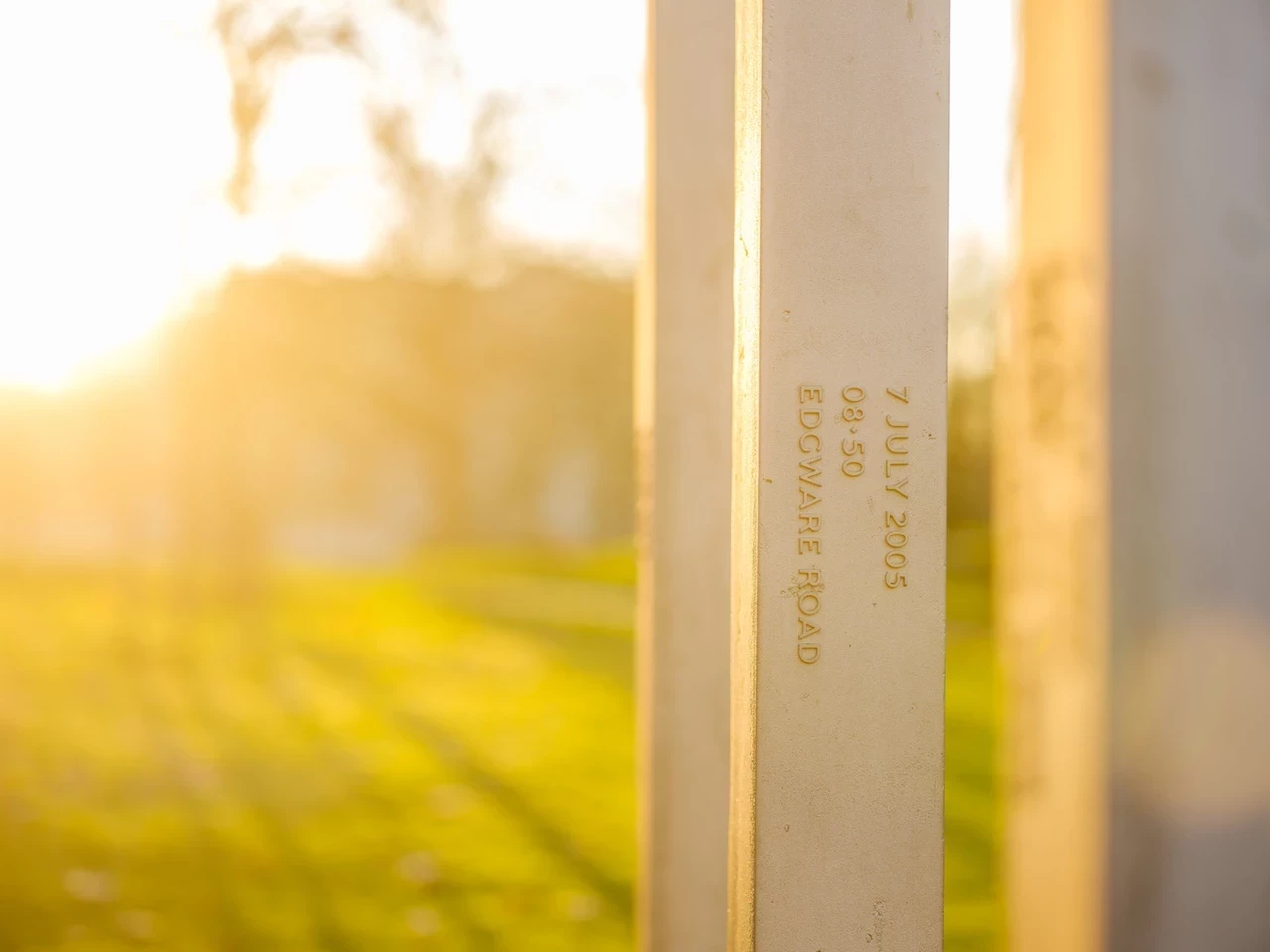
Achilles statue
The 18ft statue of Achilles, the Greek hero of the Trojan War, commemorates the soldier and politician, Arthur Wellesley, 1st Duke of Wellington (1769-1852). It was installed by order of King George III and unveiled on 18 June 1822.
Located near the Queen Elizabeth Gate at Hyde Park Corner, the statue of Achilles was the first statue installed in Hyde Park and was commissioned by a patriotic, upper class society, known as Ladies of England.
The statue was made by Sir Richard Westmacott using 33 tonnes of bronze from cannons captured in Wellington's campaigns in France. The body of the statue is modelled on a Roman figure on Monte Cavallo in Italy. The head is based on the Duke himself.
The statue was originally completely nude and caused outrage so a small fig leaf had to be added soon after it was installed.
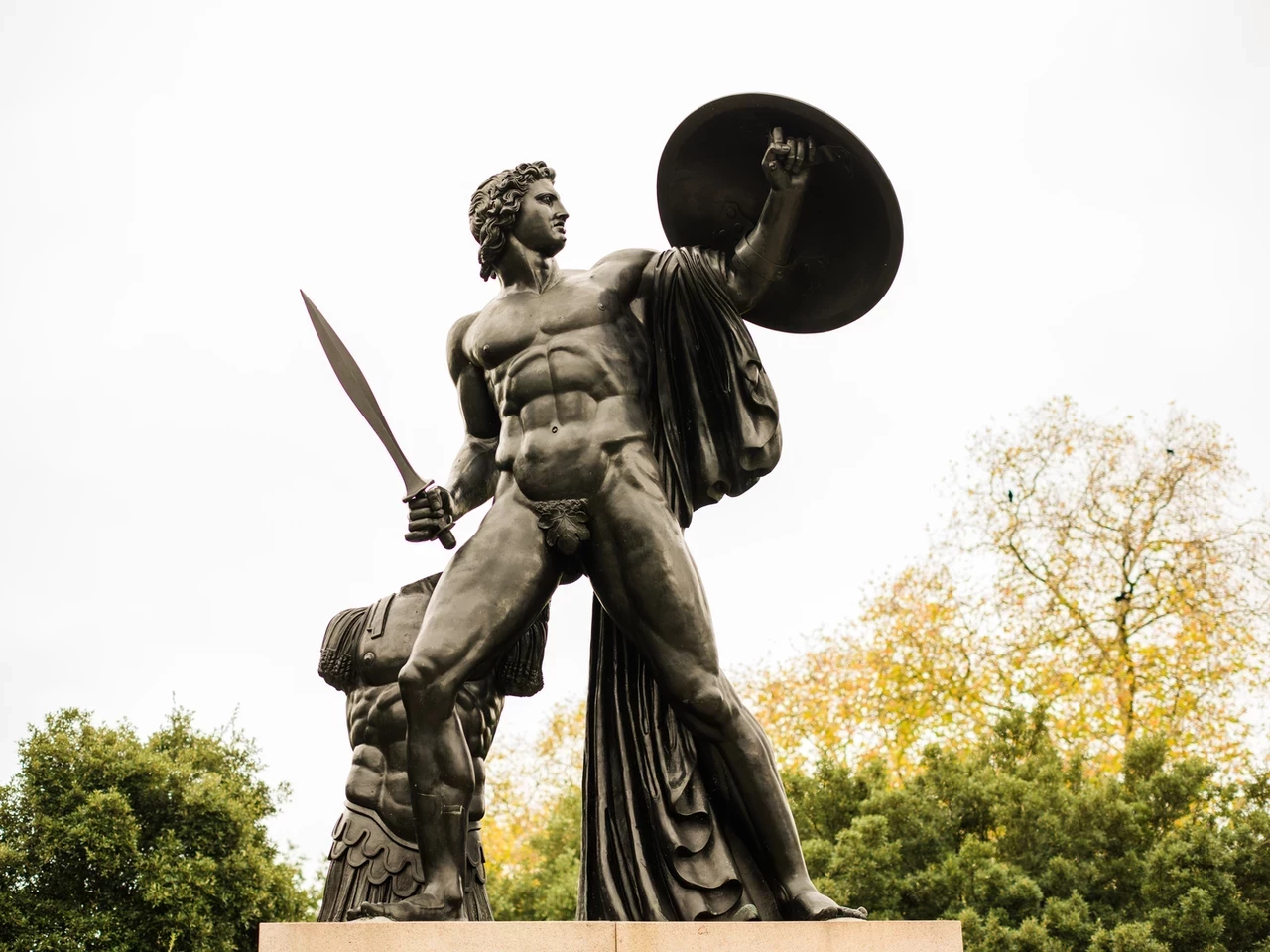
Animals in War memorial
The Animals in War Memorial, located outside Hyde Park near Brook Gate, commemorates animals that died in wars and conflicts. The creatures ranged from mules which were silenced in the Burmese jungle in the Second World War by having their vocal cords cut to glow worms, used by soldiers as a source of light to read maps in the First World War
The memorial was unveiled by the Princess Royal in November 2004, on the 90th anniversary of the start of the First World War. It was inspired by Animals in War, a book by Jilly Cooper. A national appeal raised the £2 million cost of the memorial.
The memorial was designed by David Backhouse and consists of a 58ft curved Portland stone wall displaying carvings of animals. Two heavily-laden bronze mules struggle through a gap in the wall and ahead of them a horse and dog head off into the distance.
The Animals in War Memorial is not managed by The Royal Parks. For more information about the Animals in War Memorial visit the Animals in War Memorial Fund.
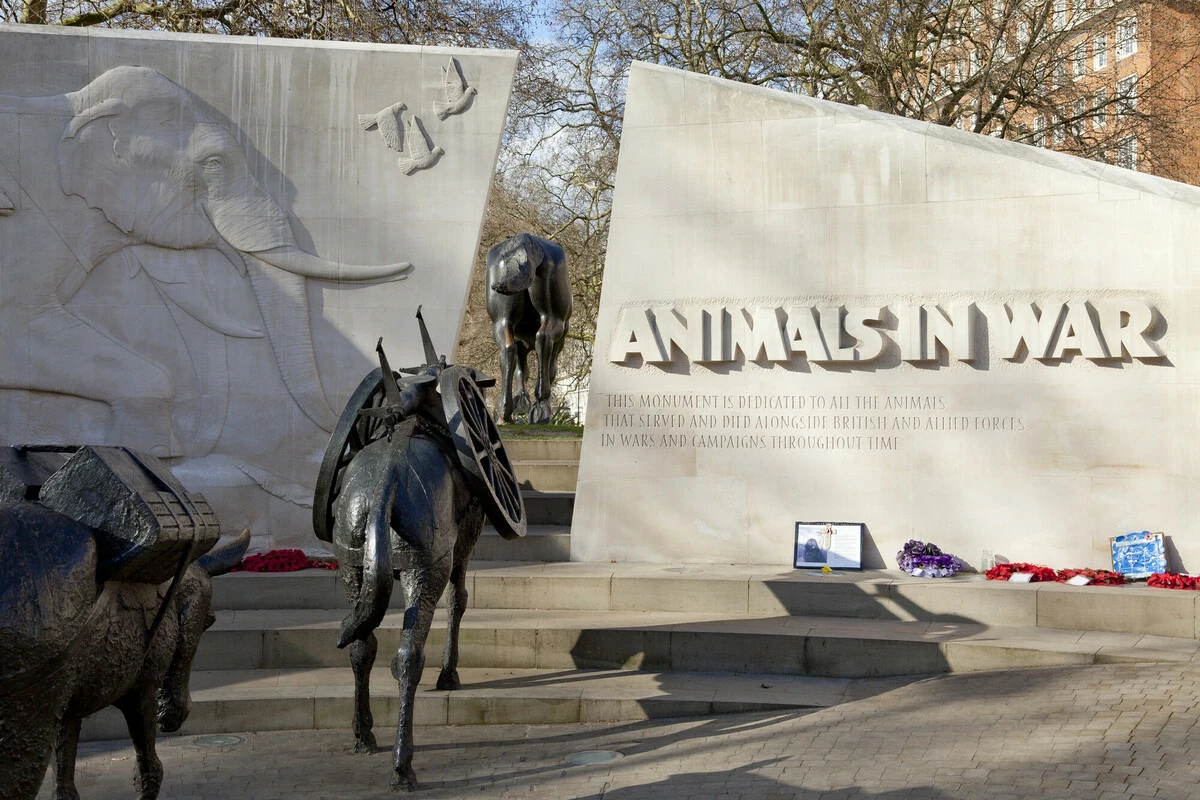
Apsley Gate
This classical stone gateway with its scroll-topped columns was designed by Decimus Burton, then just 25 years old. It was made from Portland stone and built in 1826-29.
The friezes by John Henning were copied from the Elgin Marbles that were originally on the Parthenon in Athens. Burton also designed a grand triumphal arch, now in the middle of the roundabout opposite Hyde Park.
Just inside the gates, the classical-style lodge house was also built by Decimus Burton. It has three bays in a Greek portico style and a turret clock by Thwaites and Reeds.
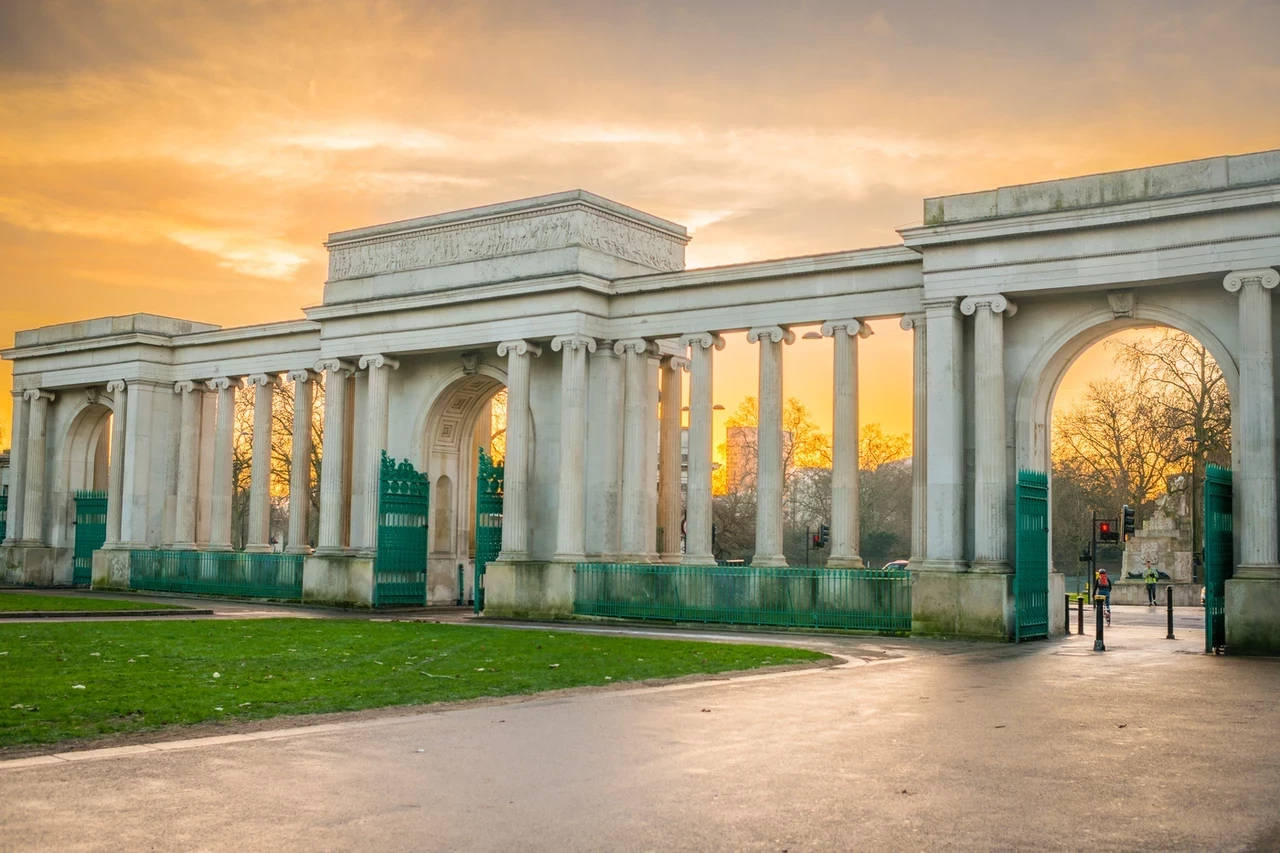
Boy & Dolphin fountain
The marble Boy and Dolphin fountain was made in 1862 by Alexander Munro, a friend of the Alice in Wonderland author, Lewis Carroll. The fountain is located in Hyde Park's Rose Garden.
There is a small metal plaque on a post nearby explaining the fountain's history.
It originally stood in a Victorian sunken garden that was demolished when Park Lane was widened – which is now the site of the Joy of Life fountain. The fountain moved to The Regent's Park in 1962 and returned to Hyde Park in 1995.
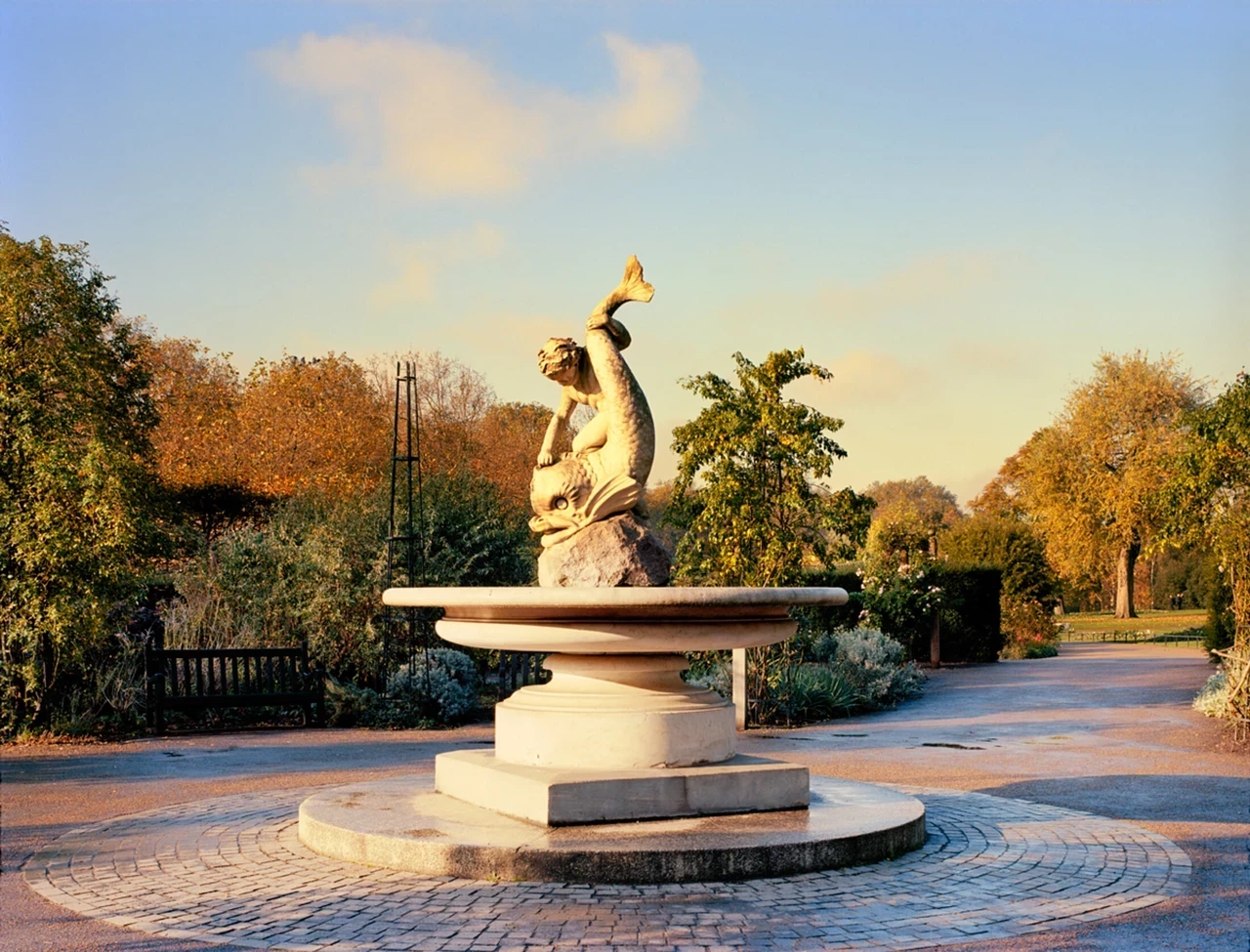
Cavalry memorial
The Cavalry memorial is a bronze sculpture, which represents St George on horseback stepping over a defeated dragon, with a frieze of galloping horsemen around the base. The memorial commemorates members of the Cavalry Regiments killed during the First World War.
Designed by Adrian Jones, an army vet, the sculpture contains bronze which came from guns captured during World War 1. The base was designed by Sir John Burnet.
Originally installed in 1924 at Stanhope Gate, the Cavalry memorial was moved to its present site near the bandstand in 1961, following the widening of Park Lane.
The Cavalry memorial also contains a bronze plaque which lists the cavalry of the Empire. The text has been updated to include later conflicts.
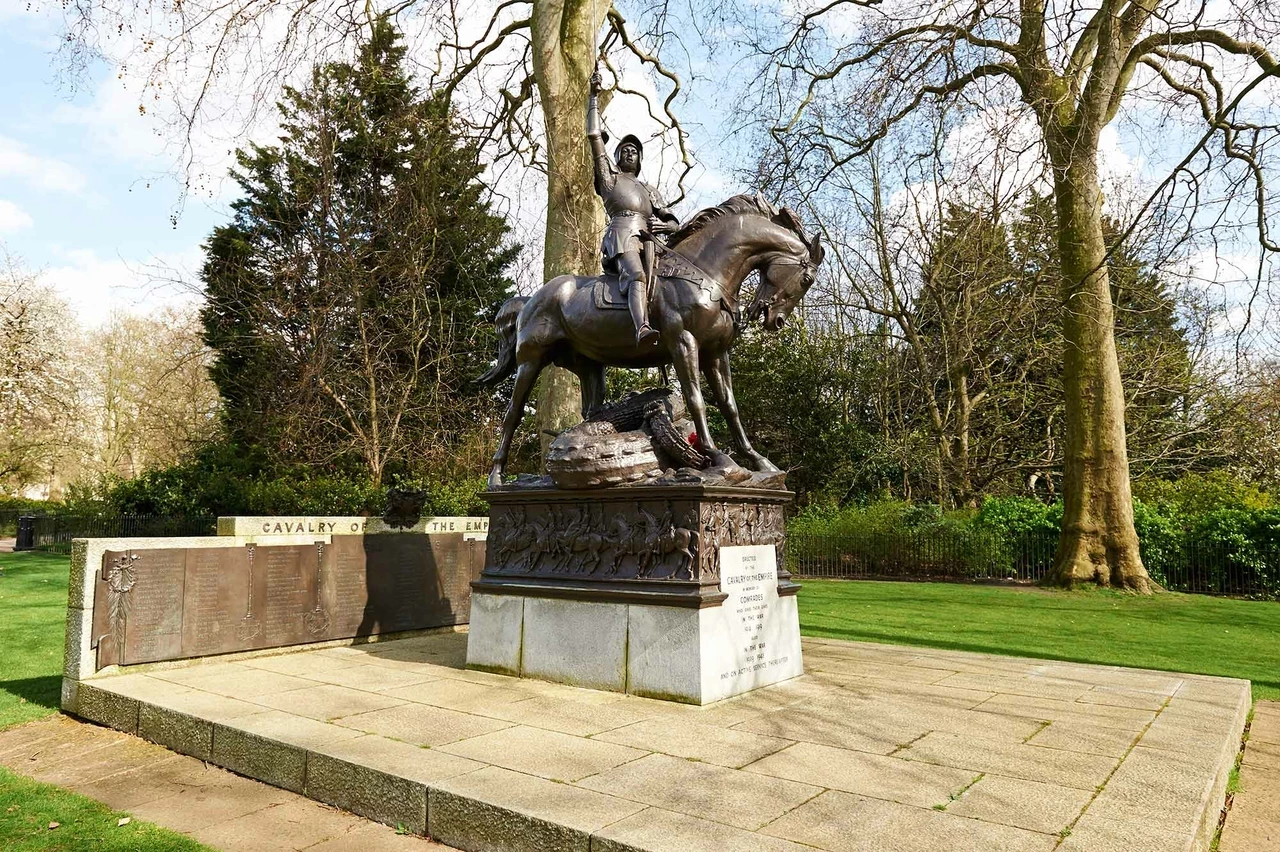
Diana Memorial Fountain
This unique memorial to Diana, Princess of Wales was opened by Her Majesty The Queen on 6th July 2004.
The fountain was built with the best materials, talent and technology. It contains 545 pieces of Cornish granite - each shaped by the latest computer-controlled machinery and pieced together by hand using traditional skills.
The design aims to reflect Diana's life, water flows from the highest point in two directions as it cascades, swirls and bubbles before meeting in a calm pool at the bottom. The water is constantly being refreshed and is drawn from London's water table.
See here for more information on visiting the memorial.
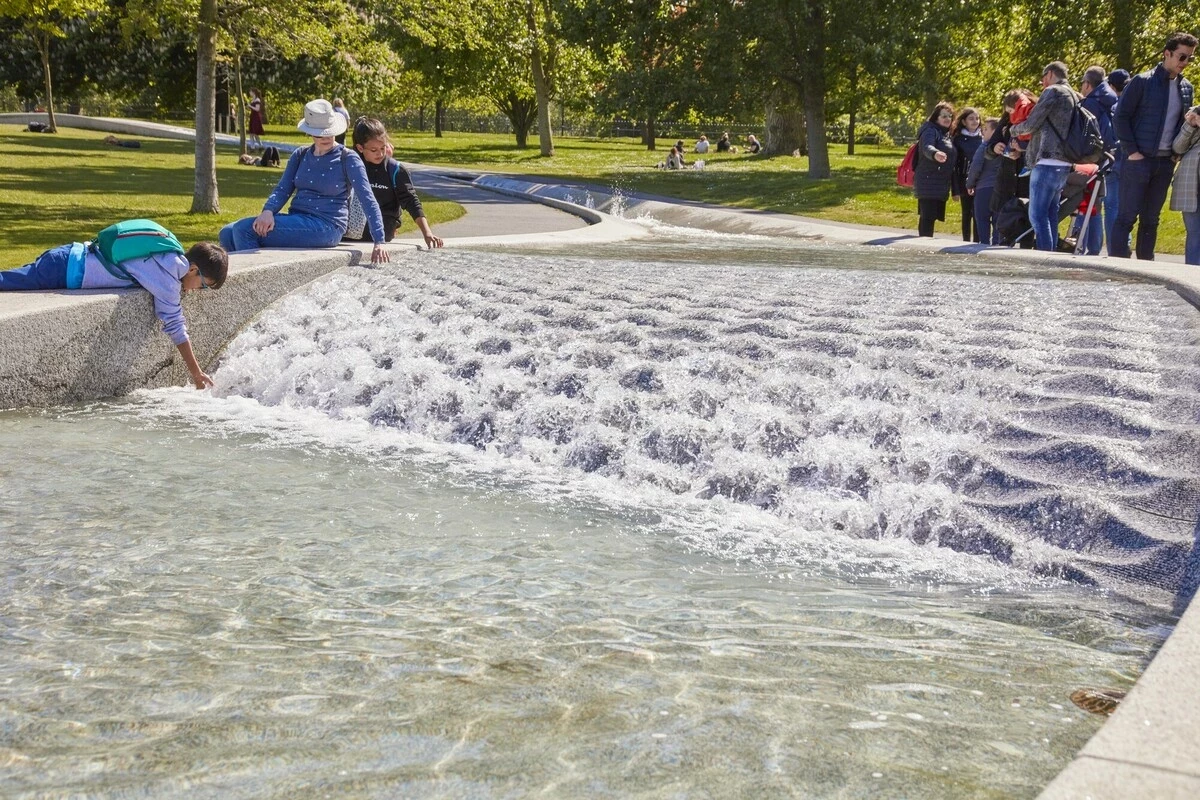
Freeman Family drinking fountain
The Freeman Family drinking fountain is a public drinking fountain located near Cumberland Gate. Unveiled in 2009, it was the first drinking fountain installed in Hyde Park in 30 years.
The fountain is a sphere made from mirror-polished, marine-grade stainless steel. It has four drinking fountains at different heights to cater for different users.
The fountain was given to Hyde Park as a gift from the Freeman Family and was designed by David Harber.
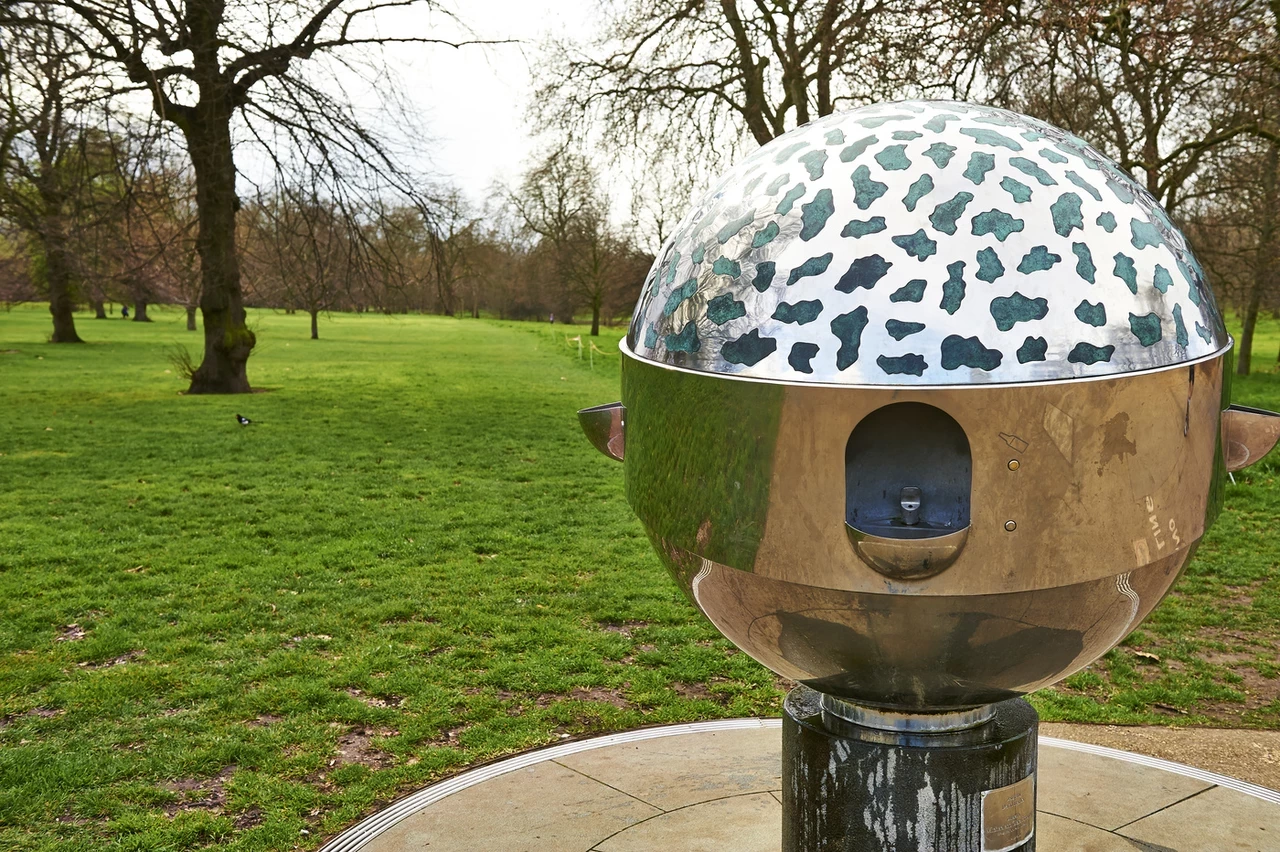
Holocaust Memorial
The Holocaust Memorial is a garden of boulders surrounded by white-stemmed birch trees, located to the east of The Dell. It was Britain's first memorial to the victims of the Holocaust.
The memorial was constructed in 1983 and paid for by the Board of British Jews. The design was by Richard Seifert and Derek Lovejoy and Partners.
The largest boulder is inscribed with text from the Book of Lamentations:
"For these I weep. Streams of tears flow from my eyes because of the destruction of my people."
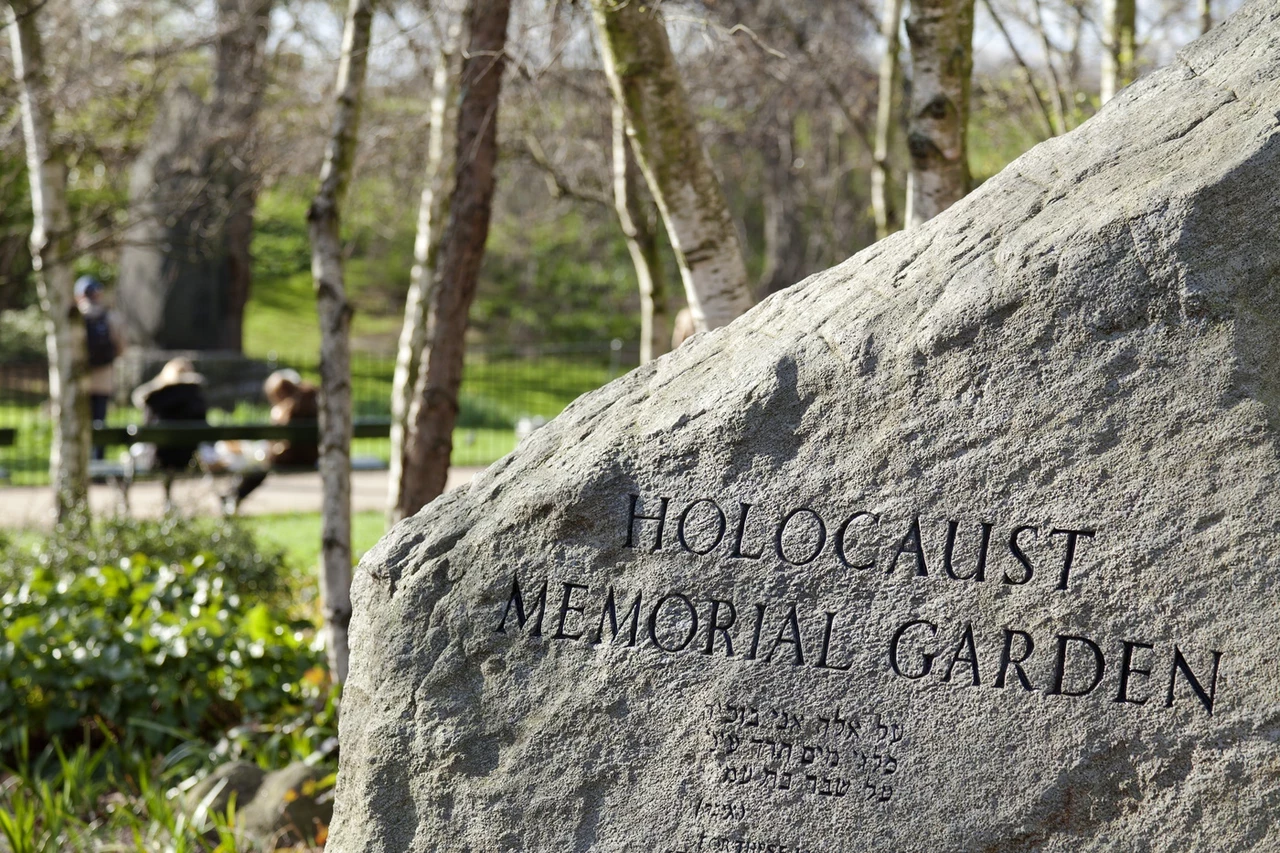
Hudson Memorial Bird Sanctuary
The Hudson Memorial Bird Sanctuary is a carved stone memorial commemorating the 19th century writer and naturalist, William Hudson. He helped to establish the Royal Society for the Protection of Birds and campaigned for wild areas in parks, at a time when they were always neat and tidy.
The carving, by Sir Jacob Epstein, represents Rima, the child goddess of nature who featured in Hudson's novel Green Mansions, published in 1904. The memorial was installed in 1924 and was immediately controversial. The Daily Mail wrote: "take this horror out of our park".
Today, this area is a refuge for smaller birds, such as robin, tits, blackbird, wren and goldcrest.
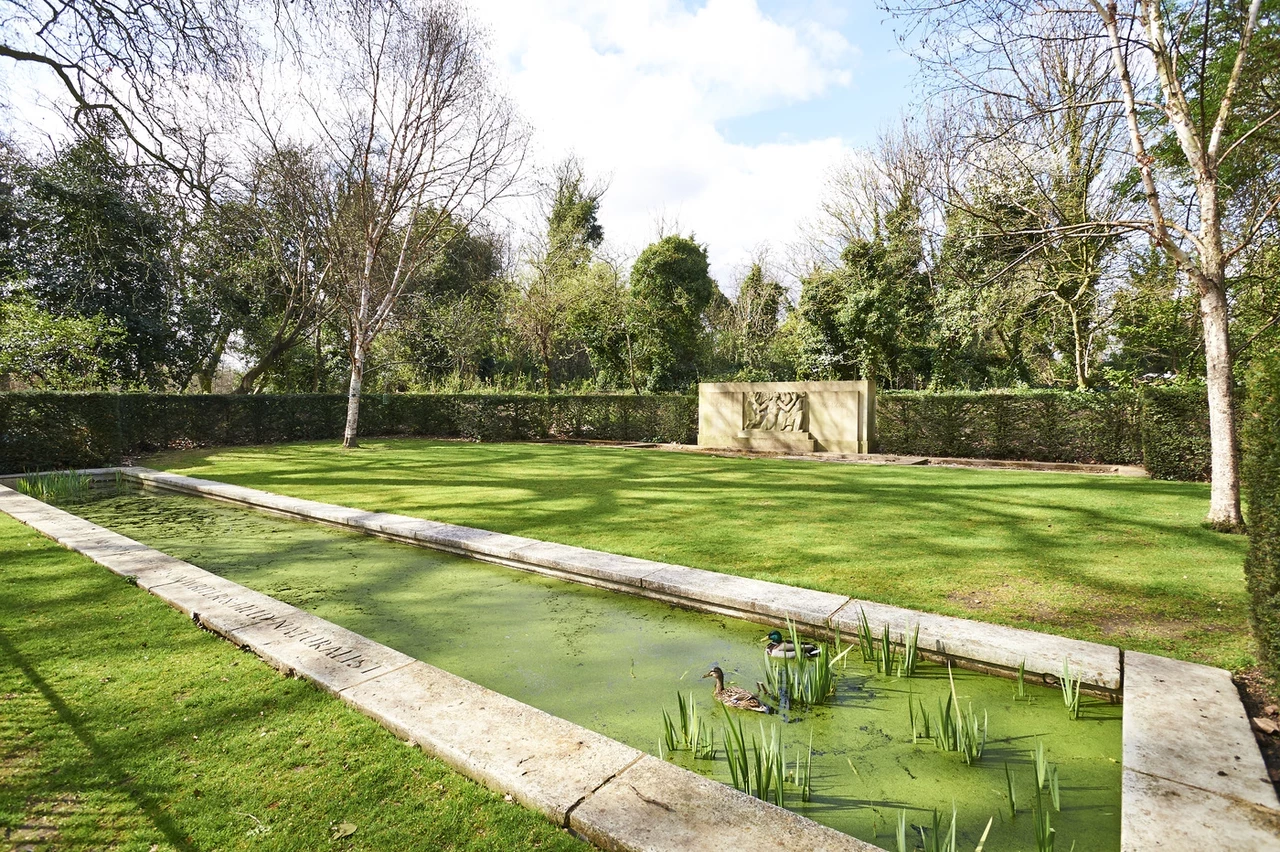
The Huntress fountain
The Huntress fountain, located in the Rose Garden, features a bronze figure of Diana, the goddess of hunting, shooting an arrow.
The fountain was installed in 1906 and made by Countess Feodora Gleichen, the first woman member of the Royal Society of British Sculptors. It was donated by Sir Walter and Lady Palmer.
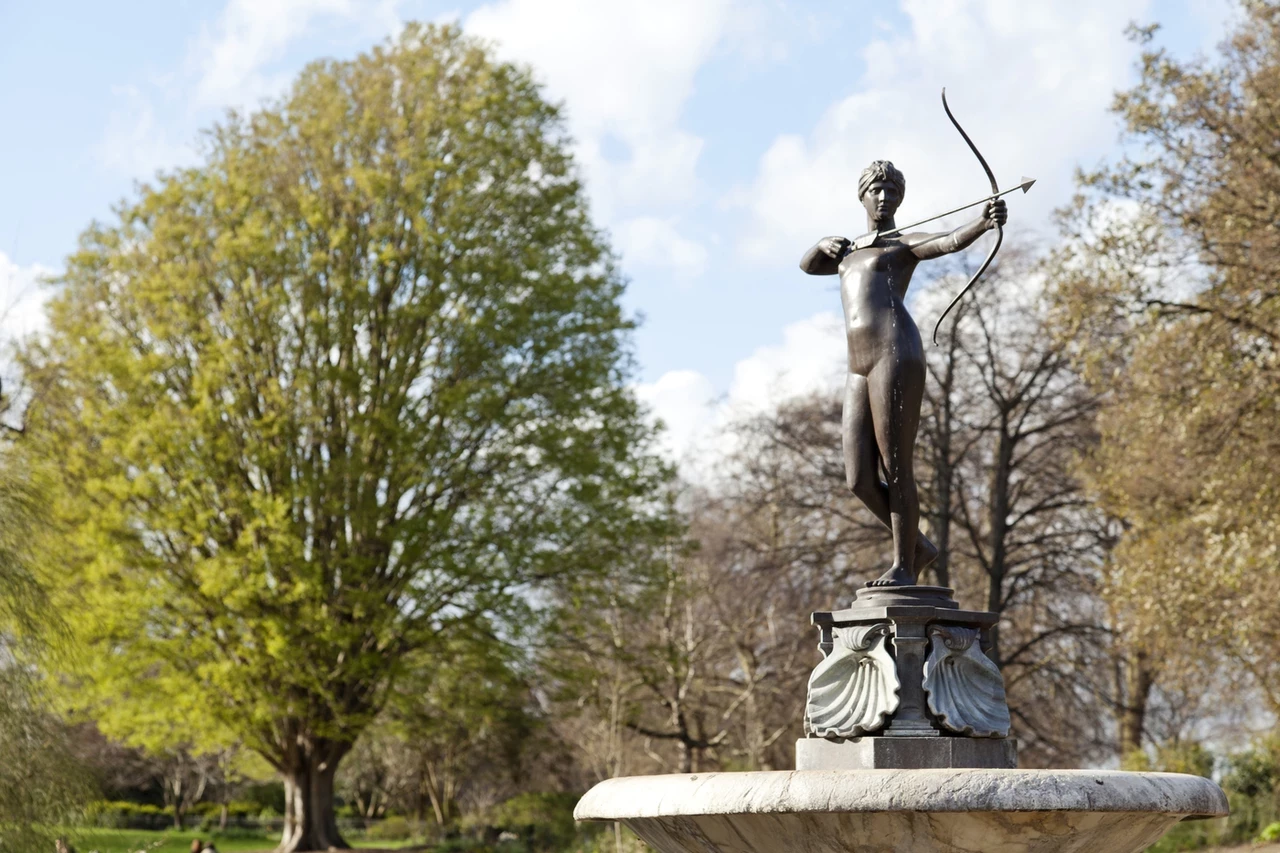
Hyde Park bandstand
The bandstand in Hyde Park is one of the oldest in Britain. It was built in 1869 and originally stood in Kensington Gardens, but moved to Hyde Park in 1886. The octagonal roof gives it particularly good acoustics.
Fred Astaire and Ginger Rodgers song "Isn't it a Lovely Day to be Caught in the Rain" from the 1935 film Top Hat was set on the Hyde Park bandstand but actually filmed on a soundstage at RKO's Hollywood studios.
The famous trumpeter, Harry Mortimer, described Hyde Park's bandstand as "uncomfortable, unsanitary, but much loved". He did a week's engagement on the bandstand during World War II in 1944 with the Fodens Motor Works Band. He wrote in his autobiography:
"It is not easy to play or conduct beautiful music with one ear cocked for the sound of a doodle-bug engine, one hand searching for the strap of your gas mask."
Today it is used for occasional concerts, as a regular meeting point for sports and sponsored events and part of the Hyde Park Winter Wonderland event held in the park each year.
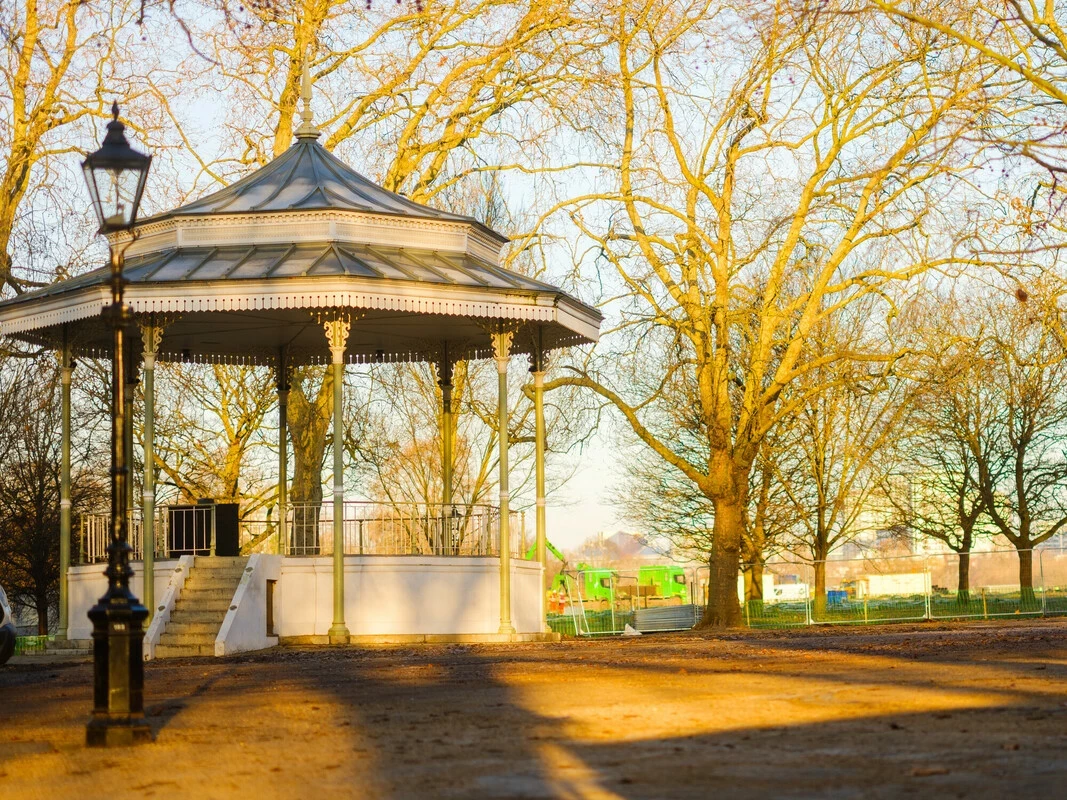
Joy of Life fountain
The Joy of Life fountain depicts two bronze figures holding hands while appearing to dance above the water, with four bronze children emerging from the pool.
It is located next to Aldford Street North Gate, alongside Park Lane.
The fountain was designed by T. B. Huxley-Jones and dates from 1963, when Park Lane was widened. It was donated by the Constance Fund to replace the Boy and Dolphin Fountain which previously stood on this spot.
In 2008, the charity, Marie Curie Cancer Care, planted 60,000 daffodil bulbs around the fountain to celebrate its 60th anniversary.
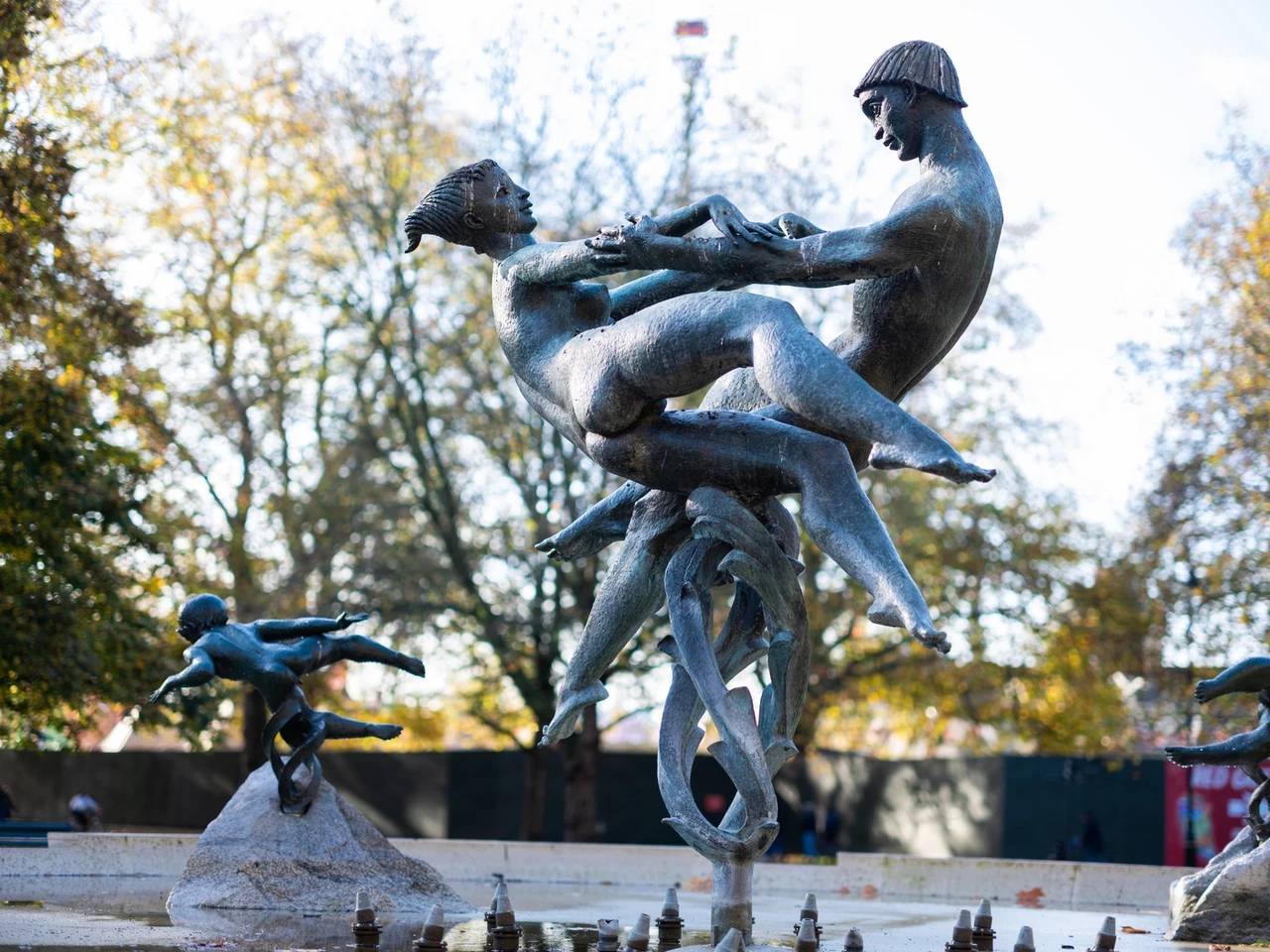
Norwegian War memorial
The Norwegian Navy and Merchant Fleet presented this large granite boulder in 1978 as thanks for British support during World War 2.
The memorial consists of a boulder of pre-Cambrian granite, mounted on three smaller stones. The front is engraved: "You gave us a safe haven in our common struggle for freedom and peace". The back reads: "Worked and shaped by forces of nature for thousands of years".
The Norwegian War memorial can be found in the Cockpit along Serpentine Road, opposite the West Boat House.
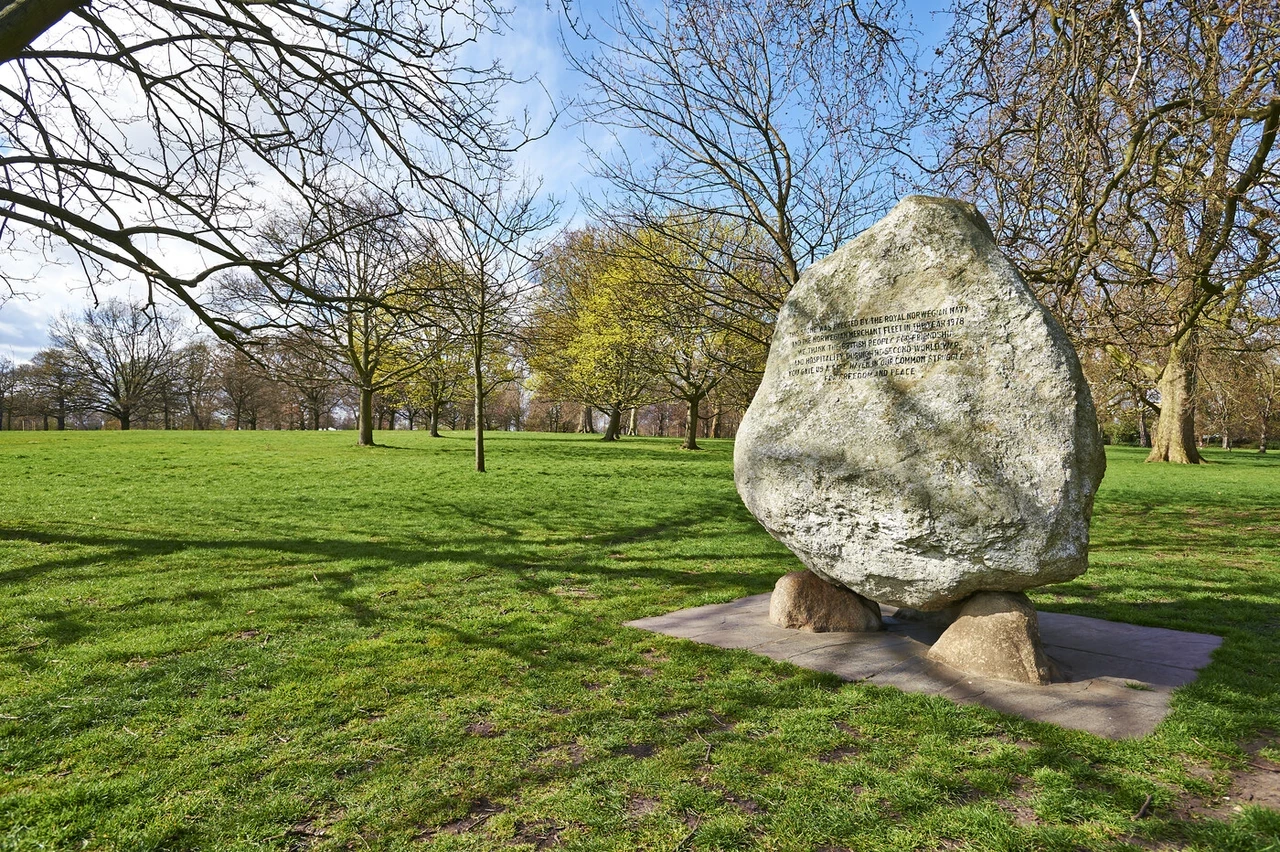
Pan statue
The Pan statue, also known as Rush of Green, is a bronze statue depicting a family and their dog rushing eagerly towards the park, urged on by Pan who is playing pipes.
The statue was the last sculpture to be designed by Sir Jacob Epstein before his death in 1959, and was posthumously installed in the park in 1961. It is located by Edinburgh Gate on the south side of Hyde Park.
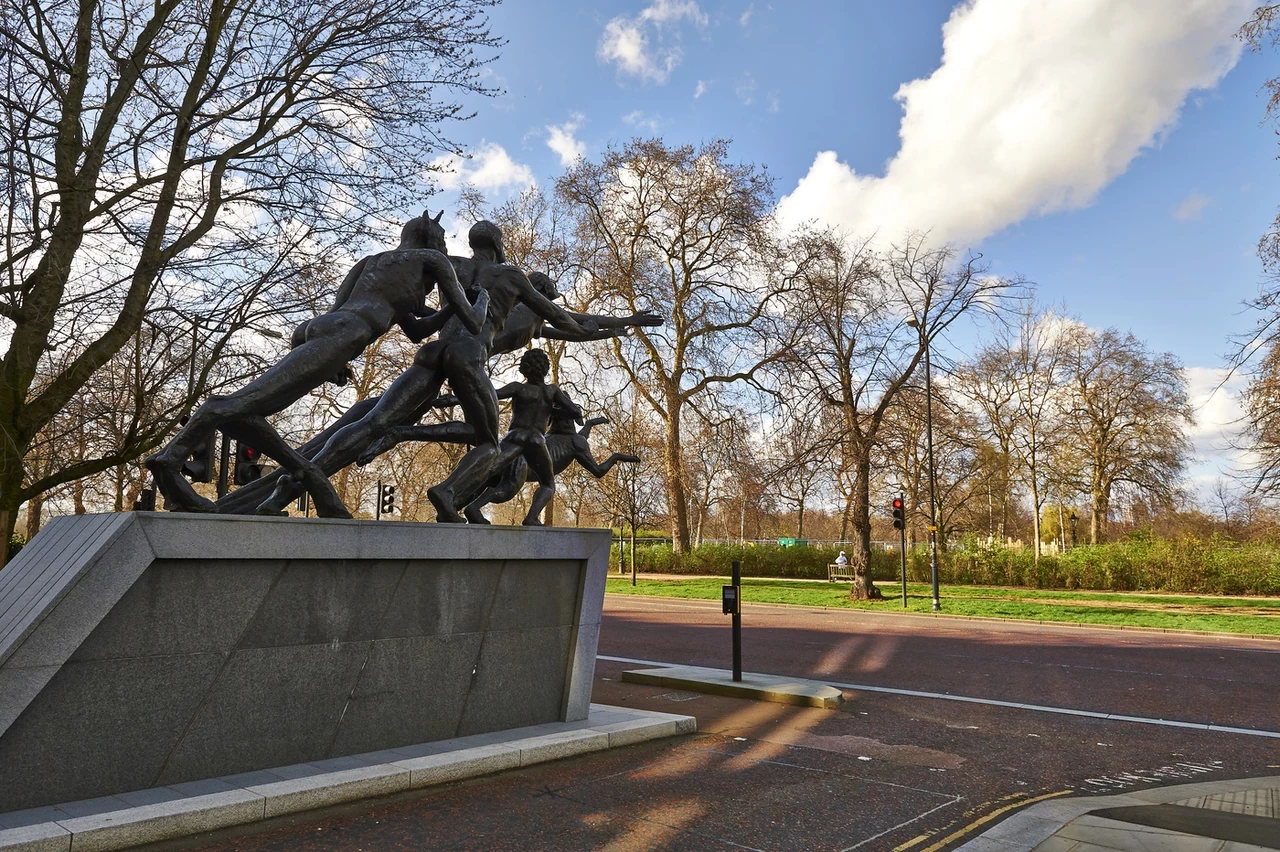
Queen Caroline memorial
The Queen Caroline memorial is a stone urn mounted on a plinth overlooking the east end of the Serpentine.
This memorial is to Queen Caroline, the wife of King George II, who from 1726-1730 created the Serpentine in Hyde Park and the Long Water in Kensington Gardens. The lake follows the shape of the valley of the Westbourne Stream, which now flows underground.
The Queen Caroline memorial was unveiled by HM The Queen in 1990.
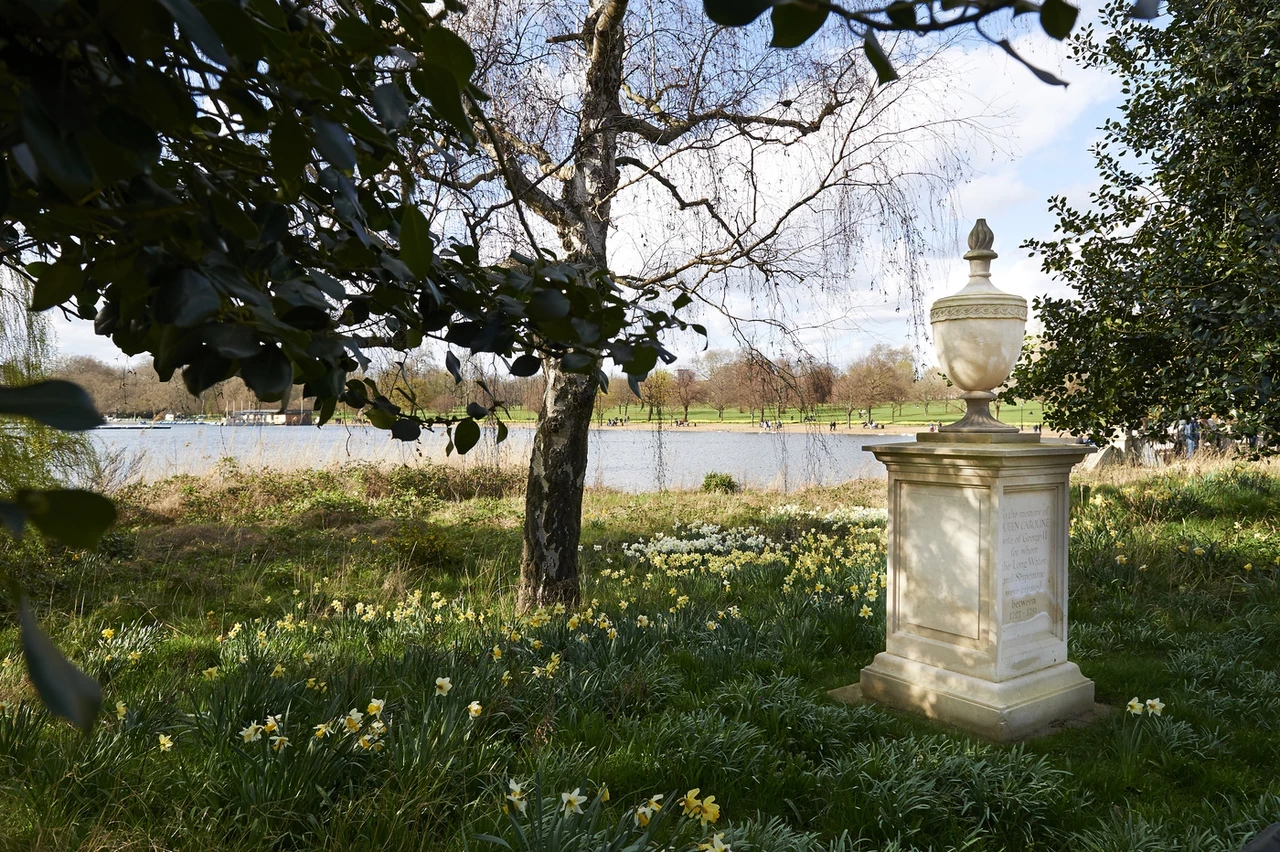
Queen Elizabeth Gate
These highly decorated gates were installed to commemorate the 90th birthday of Queen Elizabeth the Queen Mother. The central screen, designed by David Wynne, unites two national symbols: the lion of England with the unicorn of Scotland.
The Queen Elizabeth gates are made from stainless steel and designed by Giuseppe Lund. They were funded by public subscription and unveiled by the Queen in 1993.
Reaction was mixed. Crafts Magazine described them as "a music hall joke, a pantomime dame and a seaside postcard rolled in to one". The then arts minister, Lord St John of Fawsley, said they were "full of joy, strength and courage, like the personage in whose honour they have been created".
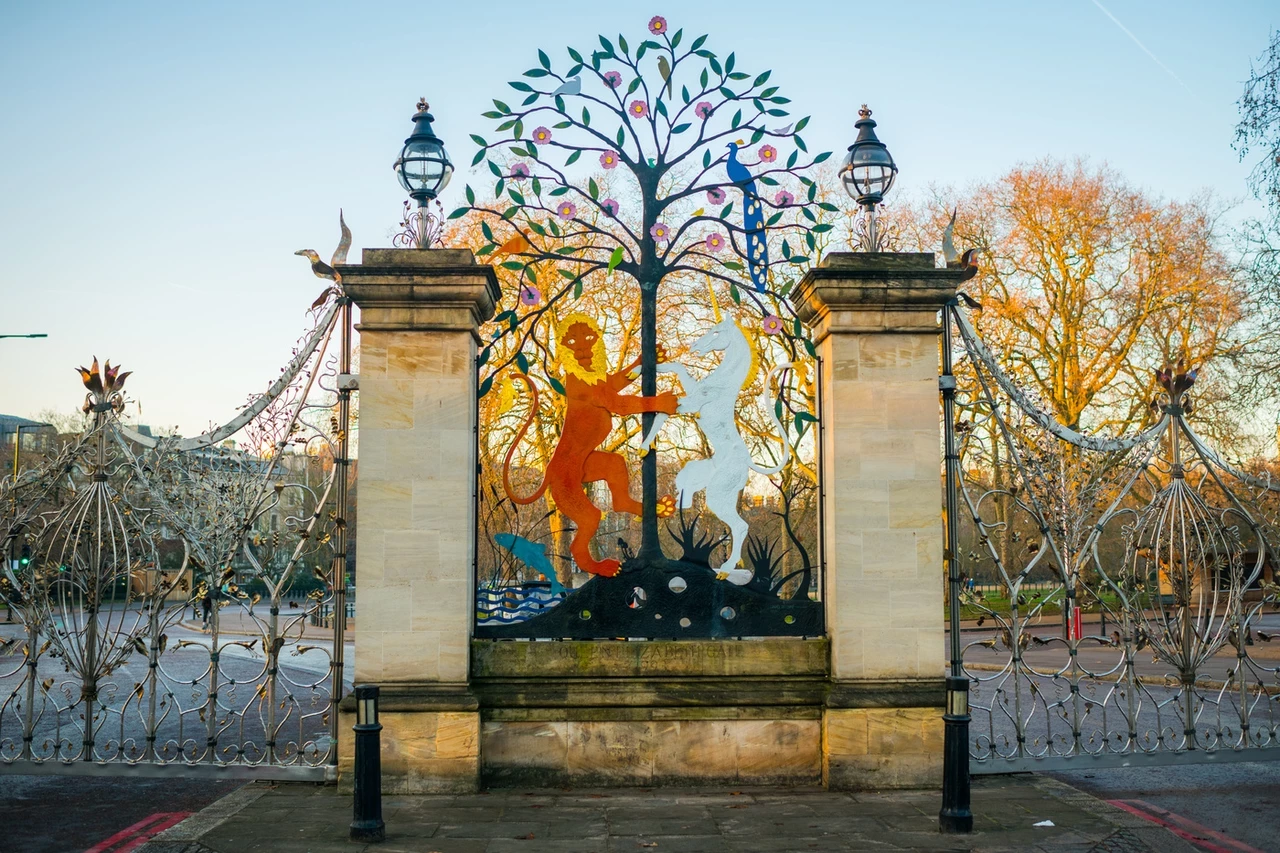
Serenity
Serenity is a striking bronze sculpture located on the south side of the Serpentine, near the Diana Memorial Fountain.
The sculpture is inspired by the Egyptian goddess of nature. It was designed by British sculptor Simon Gudgeon and was installed in the park in 2009.
Serenity was donated by Halcyon Gallery and the sculpture's creator Simon Gudgeon to help raise funds for the Hyde Park Learning Centre. At the base of the sculpture you can see 1,000 plaques dedicated to supporters of the appeal.
